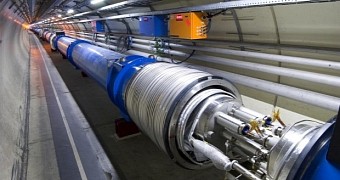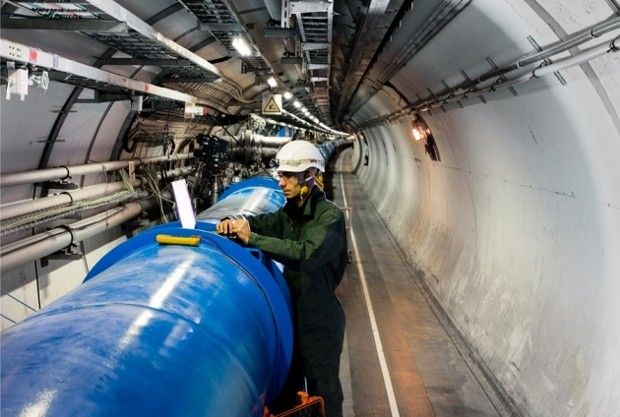Yesterday might have been a day of rest for regular folks, what with it being Sunday and all, but scientists and engineers working with the European Organization for Nuclear Research (CERN) had a lot work on their hands.
They restarted the Large Hadron Collider (LHC), currently the absolute largest particle smasher anywhere in the world, and had a pair of proton beams circulate inside it in opposite directions.
This first experiment conducted following a 2-year break for upgrades and maintenance work went flawlessly, CERN Director for Accelerators and Technology Frédérick Bordry said in a statement.
“After two years of effort, the LHC is in great shape,” his exact words were. “The return of beams to the LHC rewards a lot of intense, hard work from many teams of people," added the Head of CERN’s Beam Department, Paul Collier.
The proton beams behaved as was expected of them
The first proton beam to race through the 27-kilometer (17-mile) ring that is the LHC was injected into the machinery at 10:41 a.m. Geneva-time. Another proton beam moving in an opposite direction followed a while later, at 12:27 p.m., CERN scientists detail.
Both these proton beams were sent racing through the LHC at an energy level of 450 gigaelectron volts (GeV). Although the machinery is designed to make such beams crash into one another, these two were spared. Thus, no collisions happened inside the LHC this past April 5.
What's more, it is understood that the beams that were fired during yesterday's experiment contained just a minimum of protons. This is because scientists simply wanted to see if the LHC was working properly following its prolonged shutdown.
Fear not, things will soon get more interesting
CERN researchers expect that, come June, collisions between proton beams will once again take place inside the LHC. To this end, operators will spend the next few weeks checking all systems and gradually increasing energy levels.
Eventually, the machinery should reach an energy level of 13 teraelectron volts (TeV), which is twice as much as the level it operated at during its first season. The much anticipated proton-proton collisions taking place at 13 TeV will help reveal the makeup of the universe.
Dark matter and antimatter are among the things scientists hope to learn more about by smashing proton beams into one another at insanely high energy levels. Revealing the properties of the Higgs boson, discovered during the LHC's first run, is also on the agenda.
“Physicists will be putting the Standard Model of particle physics to its most stringent test yet, searching for new physics beyond this well-established theory describing particles and their interactions,” explain CERN's leaders.

 14 DAY TRIAL //
14 DAY TRIAL // 

